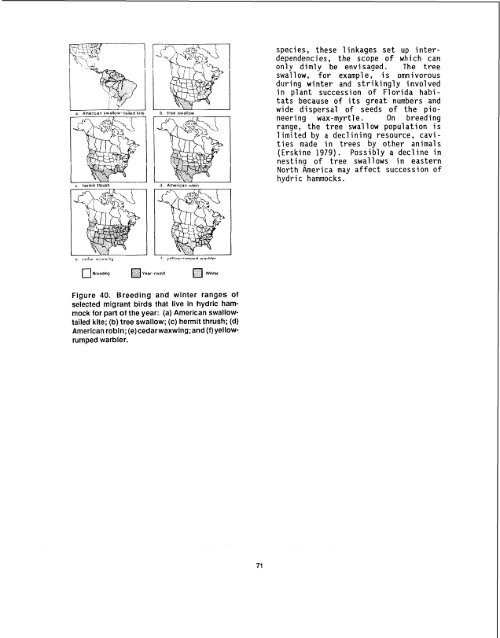The Ecology of Hydric Hammocks - USGS National Wetlands ...
The Ecology of Hydric Hammocks - USGS National Wetlands ...
The Ecology of Hydric Hammocks - USGS National Wetlands ...
Create successful ePaper yourself
Turn your PDF publications into a flip-book with our unique Google optimized e-Paper software.
R Amerlcan swallow-tailed kite b. tree swallowC. hermit thrush d. American robinspecies, these linkages set up interdependencies,the scope <strong>of</strong> which canonly dimly be envisaged. <strong>The</strong> treeswall ow, for example, i s omnivorousduring winter and strikingly involvedin plant succession <strong>of</strong> Florida habi -tats because <strong>of</strong> its great numbers andwide dispersal <strong>of</strong> seeds <strong>of</strong> the pioneeringwax-myrtle. On breedingrange, the tree swallow population islimited by a declining resource, cavitiesmade in trees by other animals(Erskine 1979). Possibly a decline innesting <strong>of</strong> tree swallows in easternNorth America may affect succession <strong>of</strong>hydri c hammocks.Breedng year-round WnterFigure 40. Breeding and winter ranges <strong>of</strong>selected migrant birds that live in hydric hammockfor part <strong>of</strong> the year: (a) American swallowtailedkite; (b) tree swallow; (c) hermit thrush; (d)American robin; (e)cedarwaxwing; and (f) yellowrumpedwarbler.

















